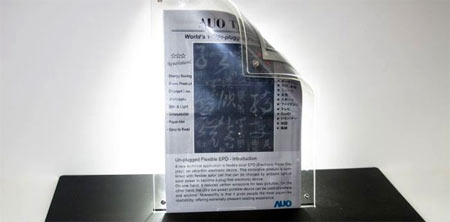At the FPD International 2011 exhibition in Japan display manufacturers are currently exhibiting the future of display technology, and we get a glimpse of what to expect in new products in the next few years. In this article we take a look at Samsung’s 10.1” 2560x1600 panel, AUO’s new OLED panels, LG’s new 329 ppi 4.5-inch LCD panel, invisible glass and more.
Display technologies of the future
At the FPD International exhibition display manufacturers have a chance to reach out to customers and exhibit their new display innovations.
The most secretive projects are not on display but a lot of other interesting technologies are. In this article we take a quick look at the most interesting new display products display from Samsung, LG, Sharp, AU Optronics, Chimei Innolux and Toshiba. All these companies produce display panels, not only for their own products, but also for the majority of gadgets you buy from other brands.
AU Optronics
Taiwanese AU Optronics showcased their new OLED panels and they certainly have some interesting stuff coming in 2012. One of the new OLED panels is a 32-inch OLED-TV with Full HD resolution and 0.01 ms response time.
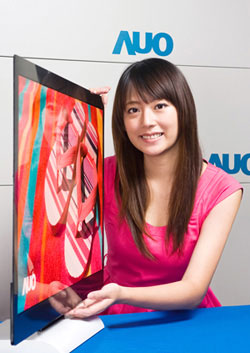
AUO’s 32-inch OLED-TV prototype
The panel is just 3 millimeters thick and boasts extremely high contrast ratio. AUO did not say if it used a RGB or color filter OLED design.
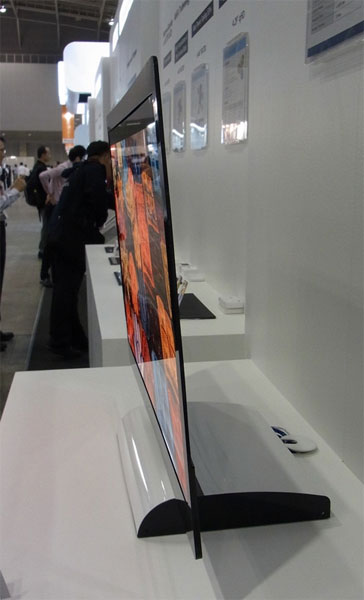
AUO’s 32-inch OLED-TV prototype
AUO also exhibits their 257ppi 4.3-inch OLED panel with true RGB pixels. AUO even jabs at Samsung’s PenTile pixel structure (found in the Galaxy Nexus and Galaxy Note) by saying that their panel offers “superior picture quality”. AUO hopes to produce 15,000 monthly substrates (that are cut into smaller panels) at their 3.5. generation OLED plant by the second half of 2012.
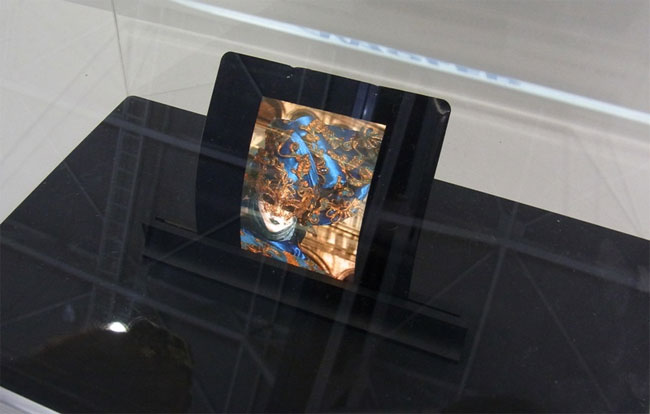
AUO’s 4-inch flexible OLED prototype
Besides that AUO is showcasing a 6-inch transparent OLED display with a transparency rate of over 35 percent and a 4-inch flexible OLED prototype that is only 0.3 mm thick. AUO had also brought 4.46-inch LCD panels with 330ppi.
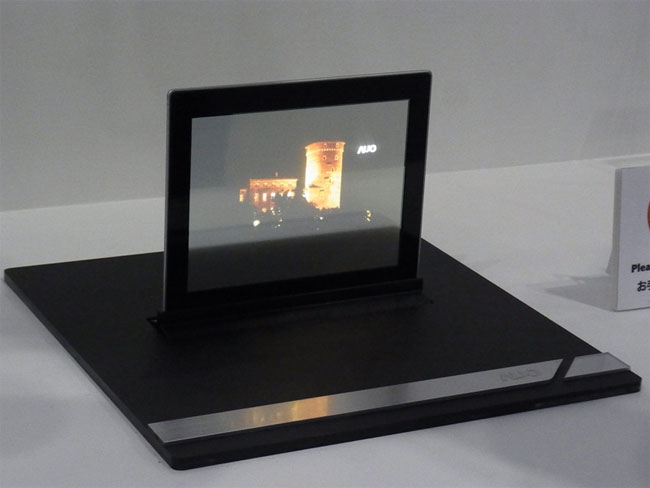
AUO’s 6.1-inch transparent OLED, picture by Tech-On Nikkei
They also exhibit a 65-inch transparent display panel and a 6-inch rollable e-Paper panel with 800x600 pixel resolution. It is just 0.127 millimeters thick and AUO believe that we can use this panel as an electronic news peter in the future.
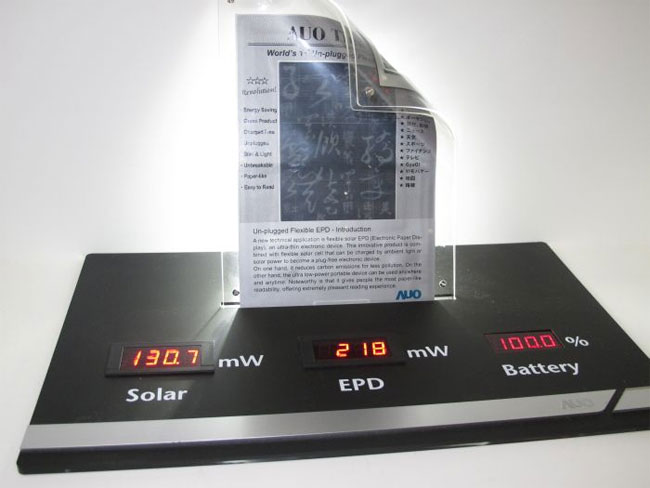
AUO’s 6-inch rollable E-paper, picture by Tech-On Nikkei
Lastly, AUO exhibits a 46-inch “scanning retarder” 3DTV that combines an active 3D technology with Full HD 3D resolution with passive, polarized 3D glasses. The active 3D technology is incorporated into the panel instead of the 3D glasses, thus allowing AUO to utilize cheaper polarized 3D glasses.
Samsung SMD
Samsung brought an old acquaintance with their 10.1-inch LCD panel with impressive 2560x1600 pixel resolution. This panel was also exhibited back in May 2011 and builds on Samsung’s PLS panel technology with IPS-like characteristics.
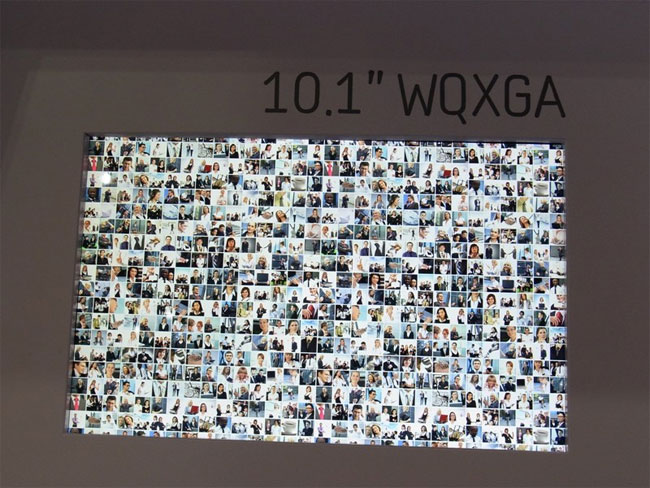
Samsung’s 10.1-inch PenTile LCD panel with 2560x1600 pixel resolution, picture by Tech-On Nikkei
The panel is based on a PenTile RGBW pixel structure. We are not fans of PenTile. Learn more about how a PenTile screen works in our Samsung Galaxy Nexus article here.
Samsung also showcased how transparent LCD screen can be utilized in refrigerators as see-through doors. It’s pretty awesome.
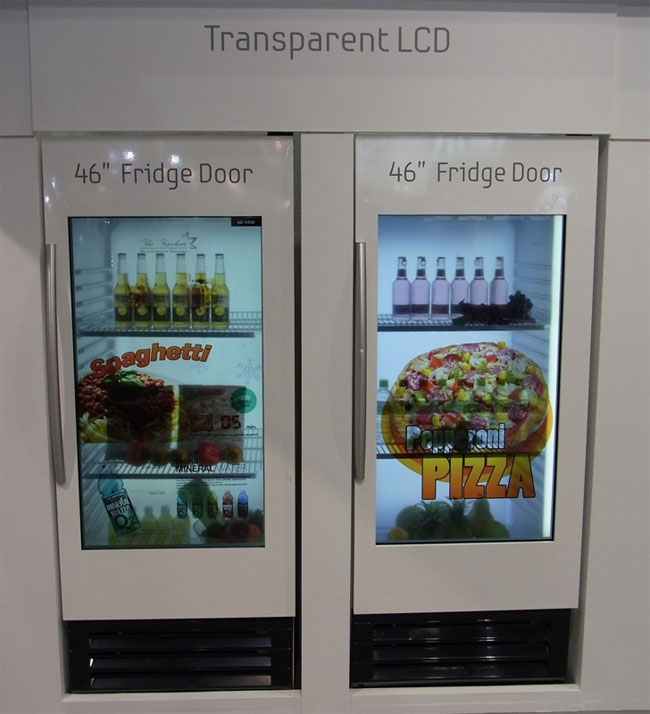
Samsung’s 46-inch transparent LCDs used in refrigerator, picture by Tech-On Nikkei
Lastly Samsung showcased wirelessly-charged 3D glasses.
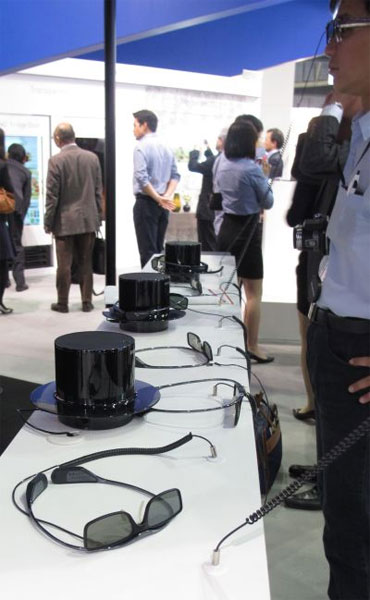
Samsung’s wirelessly-charged 3D glasses, picture by Tech-On Nikkei
The 3D glasses rely on a magnetic resonance wireless power supply technology, developed in collaboration with Silhoette, an Australia-based glasses maker. When placed on the cylinder in the picture below the glasses automatically recharge. The glasses use Bluetooth to communicate with the TV.
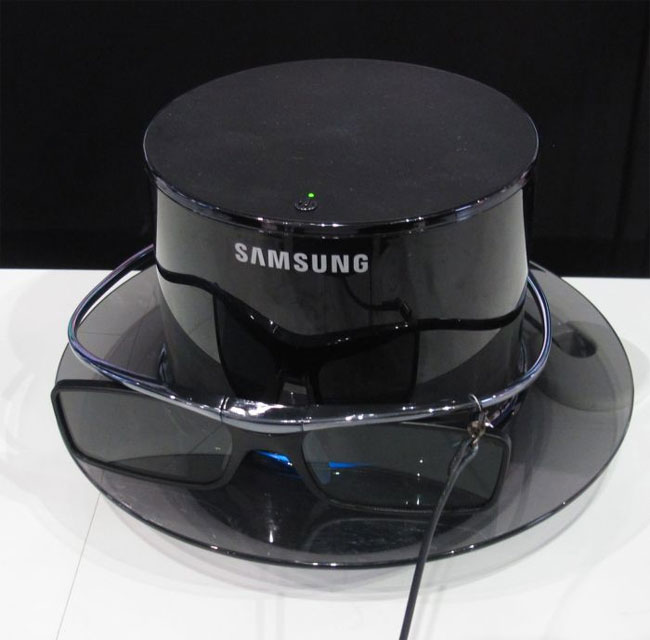
Samsung’s wirelessly-charged 3D glasses, picture by Tech-On Nikkei
LG.Display
LG brought a range of new display panels including their new 217 ppi (pixels per inch) AM OLED panel measuring 4.3 inches. They also exhibited these 55-inch LCD panels with extremely slim bezels.
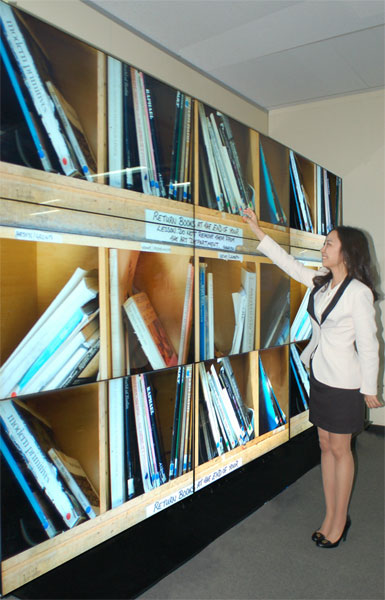
LG’s 55-inch slim-bezel TVs
Besides that LG showcased a range of new AH-IPS panels with high pixel density, including a 4.5-inch LCD panel with 329 ppi for our future high-resolution gadgets.
Chimei Innolux
Chimei Innolux is a Taiwanese (Chinese) display panel manufacturer that has seen significant growth in the last few years.
At FPD Chimei Innolux introduced their first OLED panels dubbed TrueOLED. The TrueOLED variant is based on white OLEDs with color filters. Chimei Innolux had brought 3-inch and 3.5-inch OLED panels designed for mobile devices.
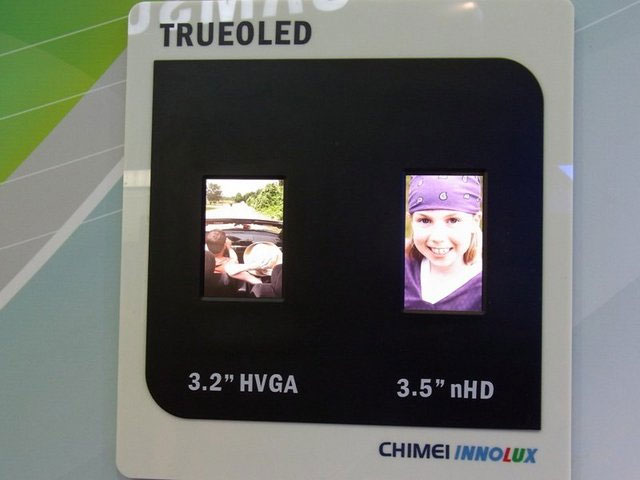
CMI’s True OLED panels
Another cool object at the CMI booth was this 46-inch 4K2K LCD panel. CMI even says that they can mass-produce it “if requested”. The panel is based on IPS technology and direct LED. It promises 1000:1 contrast ratio, 176/176 viewing angles and 190 W power consumption.
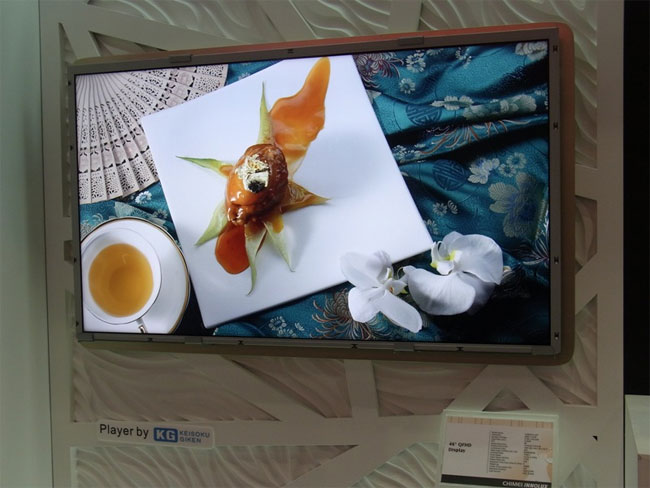
CMI’s 46-inch 4K LCD panel, picture by Tech-On Nikkei
They also exhibited high-resolution IPS panels including a 4.5-inch 720HD panel, 7-inch, 8-inch and 10.1-inch IPS LCD panels, as well as a naked-eye 56-inch 3DTV.
Toshiba
We have already talked about Toshiba and their 6.1-inch LCD panel with a 2560x1600 pixel resolution (which equals 498ppi).
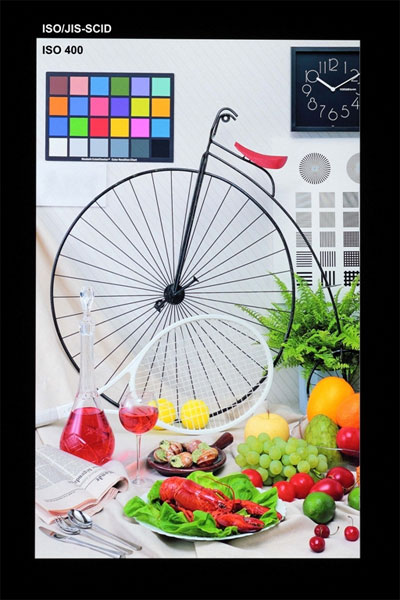
Toshiba’s 6.1-inch 498ppi LCD panel
Under the name “Soloudina” Toshiba has developed an IPS-like panel technology. LG-Display was the succeed in mass producing IPS panels and IPS has since then been used in for example iPhone 4 and the iPads.
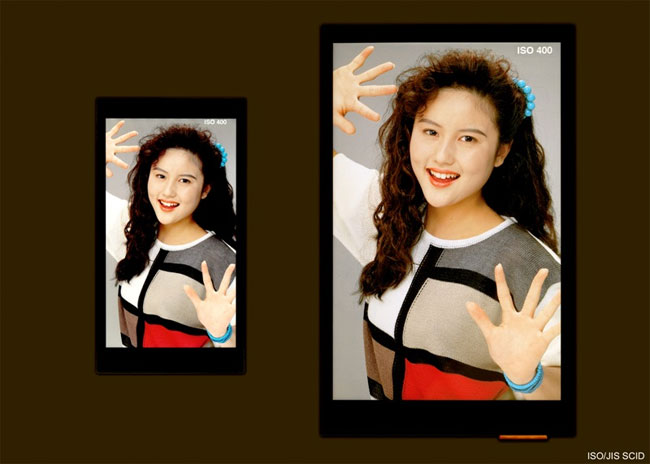
Toshiba’s 4.3 and 7-inch Soloudina LCD panels
Sharp
Sharp brought their 85-inch 8Kx4K TV once again. We have already seen it but it is one of the most promising display technologies right now.
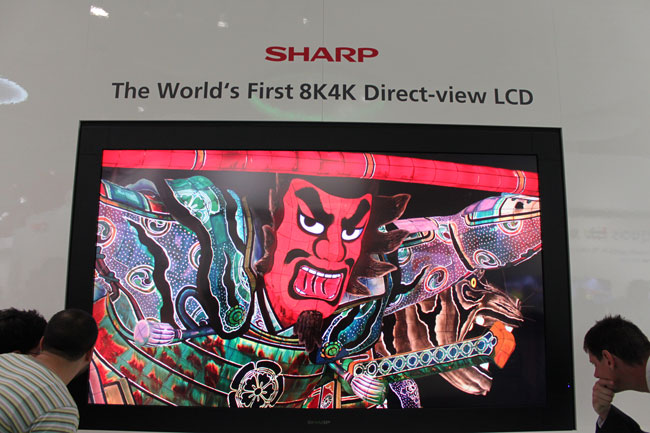
Sharps 85” 8Kx4K TV is jaw-droppingly impressive
Invisible glass
Lastly, Nippon Electric Glass exhibited a quite interesting type of new “invisible glass”. The new type of glass can reduce reflections and glare on your display panels in TVs and monitors.

Nippon’s invisible glass to the right and standard glass to the left
Nippon’s film has to be placed on the front and the back, giving the glass sheet 99.5 percent transparency. Typical glass has 92 percent transparency.
- Source: Companies, Tech-On Nikkei

